
Ankara, historically known as Ancyra and Angora, is the capital of Turkey. Located in the central part of Anatolia, the city has a population of 5.1 million in its urban center and 5.7 million in Ankara Province, making it Turkey's second-largest city after Istanbul, but first by the urban area (2,767 km2).
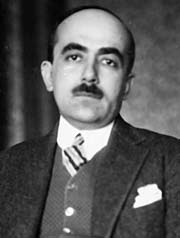
Yakup Kadri Karaosmanoğlu was a Turkish novelist, journalist, diplomat, and member of parliament.

Altındağ is a municipality and district of Ankara Province, Turkey. Its area is 123 km2, and its population is 413,994 (2022). It covers the northeastern part of the city of Ankara. Its elevation is 900 m (2,953 ft).
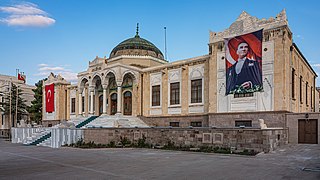
The Ethnography Museum of Ankara is dedicated to the cultures of Turkic civilizations. The building was designed by architect Arif Hikmet Koyunoğlu and was built between 1925 and 1928. The museum temporarily hosted the sarcophagus of Mustafa Kemal Atatürk from 1938 to 1953, during the period of the construction of Anıtkabir, his final resting place.

Architecture of Turkey or Turkish architecture in the republican period is the architecture practised in Turkey since the foundation of the republic in 1923. In the first years of the republic, Turkish architecture was influenced by Seljuk and Ottoman architecture, in particular during the First National Architectural Movement. However, starting from the 1930s, architectural styles began to differ from traditional architecture, also as a result of an increasing number of foreign architects being invited to work in the country, mostly from Germany and Austria. The Second World War was a period of isolation, during which the Second National Architectural Movement emerged. Similar to Fascist architecture, the movement aimed to create a modern but nationalistic architecture.

The Çankaya Mansion is the official residence of the vice president of Turkey and previously the official residence of the president of Turkey from 1923 to 2014.

Ulus is a quarter in Ankara, Turkey and is located at the center of the capital city. It was once the heart of old Ankara. The name means "tribe, nation" in Turkish.

The Grand Mosque of Bursa is a historic mosque in Bursa, Turkey. It was commissioned by the Ottoman Sultan Bayezid I to commemorate his great victory at the Battle of Nicopolis and built between 1396 and 1399. The mosque is a major monument of early Ottoman architecture and one of the most important mosques in the city, located in the heart of the old city alongside its historic markets.

The War of Independence Museum, housed in the first Turkish Grand National Assembly building in the Ulus district of Ankara, Turkey, displays important photographs, documents and furniture from the Turkish War of Independence.

The Roman Baths of Ankara are the ruined remains of an ancient Roman bath complex in Ankara, Turkey, which were uncovered by excavations carried out in 1937–1944, and have subsequently been opened to the public as an open-air museum.
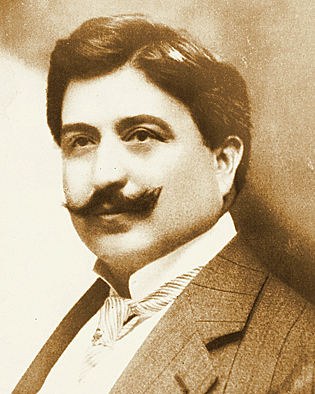
Ahmet Kemalettin or Kemaleddin, widely known as Mimar Kemalettin and Kemalettin Bey, was a renowned Turkish architect during the late Ottoman Empire and the early years of the newly established Republic. He was among the pioneers of the first national architectural movement, a type of Ottoman Revivalism.

Mehmet Vedat Tek (1873–1942) was a Turkish architect who was one of the leading figures of the First Turkish National Architectural Movement.
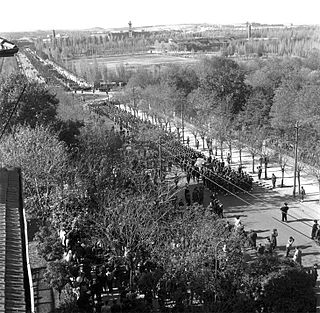
Mustafa Kemal Atatürk, the first president of the Republic of Turkey, died at the Dolmabahçe Palace, his official residence in Istanbul, on 10 November 1938. His state funeral was held in the capital city of Ankara on 21 November, and was attended by dignitaries from seventeen nations. His body remained at the Ethnography Museum of Ankara until 10 November 1953, the fifteenth anniversary of his death, when his remains were carried to his final resting place at Anıtkabir.
The Citizen, speak Turkish! campaign was a Turkish government-funded initiative created by law students which aimed to put pressure on non-Turkish speakers to speak Turkish in public in the 1930s and onwards. In some municipalities, fines were given to those speaking in any language other than Turkish. The campaign has been considered by some authors as a significant contribution to Turkey's sociopolitical process of Turkification.

Ulus Square is a square in Ankara, Turkey. "Ulus" is the Turkish word for "Nation".
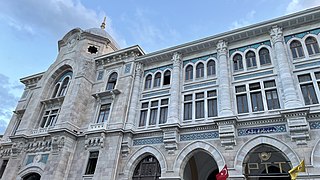
The First national architectural movement, also referred to in Turkey as the National architectural Renaissance, or Turkish Neoclassical architecture was a period of Turkish architecture that was most prevalent between 1908 and 1930 but continued until the end of the 1930s. Inspired by Ottomanism, the movement sought to capture classical elements of Ottoman and Seljuk architecture and use them in the construction of modern buildings. Despite the style focusing on Ottoman aspects, it was most prevalent during the first decade of the Republic of Turkey.

"İstiklâl Marşı" is the national anthem of both the Republic of Turkey and the Turkish Republic of Northern Cyprus. It was officially adopted by the Grand National Assembly on 12 March 1921—two-and-a-half years before the 29 October 1923 establishment of the nation—both as a motivational musical saga for the troops fighting in the Turkish War of Independence, and as an aspirational anthem for a Republic that was yet to be established.

Atatürk Museum Mansion is a historic house museum in Ankara, Turkey. It was the residence of President Mustafa Kemal Atatürk between 1921 and 1932, during the early years of the Republic. The museum is situated on Çankaya St. within the Çankaya Campus. It is situated right beside the Çankaya Mansion.

Sabiha Rıfat (Ecebilge) Gürayman was a Turkish construction engineer and volleyball player. As Turkey's first female civil engineer, she served as chief engineer for 10 years at the construction of Anıtkabir, the mausoleum of Mustafa Kemal Atatürk, founder and first President of the Republic of Turkey. She was the first female volleyball player of Fenerbahçe SK, and the first Turkish woman to engage in the game of volleyball.

Atatürk's Residence and Railway Museum is a national historic house and railway museum in Ankara, Turkey. It was originally the management building of the Turkish State Railways. Mustafa Kemal Atatürk used it as a residence and headquarters during the Turkish War of Independence.




















